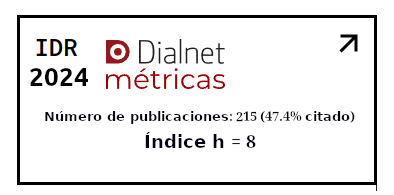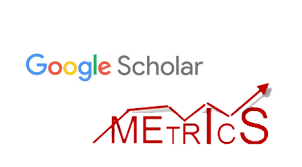La analítica del aprendizaje y las expectativas de los estudiantes universitarios
Palabras clave:
analítica del aprendizaje,, enseñanza superior, estudiantes universitarios, rendimiento escolarResumen
La analítica del aprendizaje implica la recopilación de datos educativos que las instituciones de educación superior pueden implementar en servicios de apoyo para ayudar en el aprendizaje de los estudiantes. A pesar de su relevancia, aún siguen siendo muy escasos las investigaciones sobre este tema, lo cierto es que cada vez son más las instituciones educativas interesadas en conocer más de esta tendencia y sus alcances. El propósito de este artículo fue medir las expectativas de los estudiantes de los servicios de la analítica del aprendizaje a través de un instrumento descriptivo con escala de tipo Likert que estima 12 expectativas relacionadas con la ética y privacidad, así como las características del servicio; se tomó una muestra de 675 estudiantes de nivel de licenciatura y maestría de una Universidad en México. Los resultados revelaron que existe una aceptación por los servicios de la analítica del aprendizaje donde las mujeres lo valoran más que los hombres, así como se evidenciaron áreas de oportunidad que permiten que la institución de educación superior pueda adaptar estas expectativas en la implementación y desarrollo de su política de la analítica del aprendizaje.
Descargas
Citas
Alexander, B., Ashford, K., Barajas, N., Dobbin, G., Knott, J., McCormack, M., Pomerantz, J., Seilhamer, R., y Weber, N. (2019). Educause Horizon Report: 2019. Higher Education Edition. Recuperado de https://www.learntechlib.org/p/208644/
Aristizabal, J. (2016). Analítica de datos de aprendizaje y gestión educativa. Gestión de la Educación, 6(2), 149-168. Recuperado de https://revistas.ucr.ac.cr/index.php/gestedu/article/view/25499
Avolio, B., Benzaquen, G., y Pretell, C. (2019). Global challenges for business education and the new educational agenda: Graduate attributes and teaching methods. e-Journal of Business Education & Scholarship of Teaching, 13(2), 80-99. Recuperado de https://files.eric.ed.gov/fulltext/EJ1250465.pdf
Bollenback, D. (2015). A learning analytics approach to academic program assessment in higher education. Questia, 12(3), 29-39. Recuperado de https://www.questia.com/magazine/1p3-3943417801/a-learning-analytics-approach-to-academic-program
Canavos, G. (1986). Probability and statistics: Applications and methods. Editorial: McGraw-Hill/Interamericana de México. Recuperado de https://gsosa61.files.wordpress.com/2008/03/10-canavos-g-probabilidad-y-estadistica-aplicaciones-y-metodos.pdf
Carrillo, J. (2018). Big data-analítica del aprendizaje y minería de datos aplicados en la Universidad. Pro Sciences, 2(8), 39-54. https://doi.org/10.29018/issn.2588-1000vol2iss8.2018pp29-54
Cáceres, P., Rodríguez, A., Gómez, G., y Rodríguez, C. (2020). Analítica de aprendizaje en la educación superior: una revisión de la literatura científica de impacto. IJERI: Revista Internacional de Investigación e Innovación Educativa, (13), 32–46. https://doi.org/10.46661/ijeri.4584
Cronbach, L., y Meehl, O. (1995). Construct validity in psychological tests. Psychological Bulletin, 52(4), 281-302. https: //doi.org/10.1037/h0040957
De Freitas, S., Gibson, D., Du Plessis, C., Halloran, P., Williams, E., Ambrose, M., Dunwell, I., y Arnab, S. (2014). Foundations of dynamic learning analytics: Using university student data to increase retention. British Journal of Educational Technology, 46 (6), 1175-1188. Recuperado de https://bera-journals.onlinelibrary.wiley.com/doi/abs/10.1111/bjet.12212
Domínguez, D. (2018). Big data, analítica del aprendizaje y educación basada en datos. La biblioteca electrónica de SSRN. http://dx.doi.org/10.2139/ssrn.3124369
Elias, T. (2011). Learning analytics: Definitions, processes and potential. Recuperado de https://landing.athabascau.ca/file/download/43713
Gašević, D., Dawson, S., y Siemens, G. (2015). Let’s not forget: Learning analytics are about learning. Techtrends tech trends, 1(59), 64–71. https://doi.org/10.1007/s11528-014-0822-x
Hooda, M., y Chhavi, R. (2020). Learning analytics lens: Improving quality of higher education. International Journal of Emerging Trends in Engineering Research, 8(5), 1626-1646. Recuperado de http://www.warse.org/IJETER/static/pdf/file/ijeter24852020.pdf
Ifenthaler, D. (2017). Are higher education institutions prepared for learning analytics? TechTrends, (61), 366–371. https://doi.org/10.1007/s11528-016-0154-0
Ifenthaler, D., y Yau, JY-K. (2020). Reflections on different learning analytics indicators for supporting study success. International Journal of Learning Analytics and Artificial Intelligence for Education, 2 (2), 4–23. https://doi.org/10.3991/ijai.v2i2.15639
Ifenthaler, D., y Schumacher, C. (2016). Student perceptions of privacy principles for learning analytics. Educational Technology Research and Development, 64(5), 923–938. https://doi.org/10.1007/s11423-016-9477
INTEF. (2017). Las Analíticas de Aprendizaje: Evidencias e investigación sobre su uso Implicaciones para la política y la práctica. Recuperado de https://intef.es/wp-content/uploads/2017/05/Learning-Analytics_JRC_INTEF_Abri2017.pdf
Lawson, C., Beer, C., Rossi, D., Moore, T., y Fleming, J. (2016). Identification of ‘at risk’ students using learning analytics: the ethical dilemmas of intervention strategies in a higher education institution. Education Tech Research Dev, (64), 957–968. https://doi.org/10.1007/s11423-016-9459-0
Lester, J., Klein, C., Rangwala, H., y Johri, A. (2017). Learning Analytics in Higher Education: ASHE. Higher Education Report, 43(5), 16-35. Recuperado de https://eric.ed.gov/?id=EJ1166870
Nguyen, A., Tuunanen, T., Gardner, L., y Sheridan, D. (2021). Design principles for learning analytics information systems in higher education. European Journal of Information Systems, 30(5), 541-568. https://doi.org/10.1080/0960085X.2020.1816144
Nunnally, J. C. (1967). Psychometric Theory. New York: McGraw-Hill.
Macfadyen, L., y Dawson, S. (2012). Numbers are not enough. why e-learning analytics failed to informan institutional strategic plan. Educational Technology & Society, 15(3), 149–163. Recuperado de https://citeseerx.ist.psu.edu/viewdoc/download?doi=10.1.1.298.8492&rep=rep1&type=pdf
Montgomery, A., Mousavi, A., Carbonaro, M., Hayward, D., y Dunn. W. (2019). Using learning analytics to explore self-regulated learning in flipped blended learning music teacher education. British Journal of Educational Technology, 50(1), 114-127. https://doi:10.1111/bjet.12590
Mosquera, I. (2018). Big Data en educación: Analítica de aprendizaje y aprendizaje adaptativo. Recuperado de https://www.unir.net/educacion/revista/noticias/big-data-en-educacion-analitica-de-aprendizaje-y-aprendizaje-adaptativo/549203628743/
Ozgur, C., Colliau, T., Rogers, G., y Hughes, Z. (2021). MatLab frente a Python frente a R. Journal of Data Science, 15(3), 355-372. https://doi:10.6339/JDS.201707_15(3).0001
Peñaloza, M. (2017). Big data y analítica del aprendizaje en aplicaciones de salud y educación médica. Investigación en Educación Médica, 7/(25). Recuperado de http://www.scielo.org.mx/scielo.php?script=sci_arttext&pid=S2007-50572018000100061
Prinsloo, P., y Slade, S. (2016). Student vulnerability, agency, and learning analytics: An exploration. Journal of Learning Analytics, (1), 159–182. https://doi.org/10.18608/jla.2016.31.10
Roberts, L., Howell, J., Seaman, K., y Gibson, D. (2016). Student attitudes toward learning analytics in higher education: The fitbit version of the learning world. Frontiers in Psychology, (7), 1959. https//doi: 10.3389/fpsyg.2016.01959
Rojas, P. (2017). Learning analytics: Una revisión de la literatura. Educación y Educadores, 20(1) ,406-127. https//doi: 10.5294/edu.2017.20.1.6
Romero, H., y Rojas, E. (2014). Learning analytics: ¿Cómo mejorar la educación universitaria? Recuperado de http://www.laccei.org/LACCEI2014-Guayaquil/RefereedPapers/RP093.pdf
Ruipérez, J. (2020). El proceso de implementación de analíticas de aprendizaje. Revista Iberoamericana de Educación a Distancia, 23(2), 85-101. http://dx.doi.org/10.5944/ried.23.2.26283
Sabulsky, G. (2019). Analíticas de aprendizaje para mejorar el aprendizaje y la comunicación a través de entornos virtuales. Revista Iberoamericana de Educación, 80(1). https://doi.org/10.35362/rie8013340
Sampieri, R., Fernández, C., y Baptista, P. (2014). Metodología de la investigación. México: McGrawHill.
Schumacher, C., y Ifenthaler, D. (2018). Features students really expect from learning analytics. Computers in Human Behavior, (78), 397-407. https://doi.org/10.1016/j.chb.2017.06.030
Siemens, G. (2013). Learning analytics: The emergence of a discipline. American Behavioral Scientist, 57(10), 1380-1400. Recuperado de https://journals.sagepub.com/doi/10.1177/0002764213498851
Siemens, G., y Baker, R. (02 de febrero 2012). Learning analytics and educational data Mining. Towards Comunication and Collaboration. LAK '12: Proceedings of the 2nd International Conference on Learning Analytics and Knowledge. Recuperado de https://www.upenn.edu/learninganalytics/ryanbaker/LAKs%20reformatting%20v2.pdf
Slade, S., y Prinsloo, P. (2014). Student perspectives on the use of their data: between intrusion, surveillance and care. Challenges for Research into Open & Distance Learning: Doing Things Better – Doing Better Things, 291–300. Recuperado de https://www.eden-online.org/proc-2485/index.php/PROC/article/view/1326
Tsai, Y., y Gasevic, D. (2017). The state of learning analytics in Europe. Executive summary SHEILA. Recuperado de https://sheilaproject.eu/2017/04/18/the-state-of-learning-analytics-in-europe-executive-summary/
Tempelaar, D., Rienties, B., y Nguyen, Q. (2020). Subjective data, objective data and the role of bias in predictive modelling: Lessons from a dispositional learning analytics application. PLoS ONE, 15(6). https://doi.org/10.1371/journal.pone.0233977
Wibawa, B., Siregar, J., Asrorie, D., y Syakdiyah, H. (2021). Learning analytic and educational data mining for learning science and technology. Research and Education of Science and Mathematics in the Digital Age, 20(1). https://doi.org/10.1063/5.0041844
Whitelock-Wainwright A., Gasevic D., Tejeiro, R., Tsai, Y., Bennett, K. (2019). The Student Expectations of Learning Analytics Questionnaire. J Comput Assist Learn, 1(35), 633-666. Recuperado de https://onlinelibrary.wiley.com/doi/full/10.1111/jcal.12366










